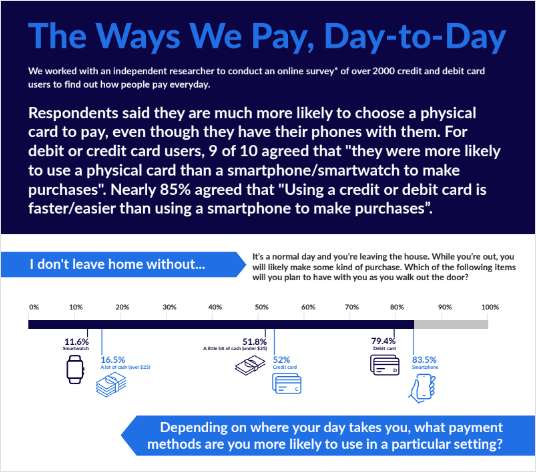ARLINGTON, Va.-In the four years since NAFCU President and CEO Fred Becker signed on, the organization has achieved nearly all the field of membership goals that it has set out to accomplish. Four-plus years ago, field of membership restrictions were one of the reasons federal credit unions were converting to state charters, which had much more liberal field of membership regulations. Just in the last federal field of membership update, the trade, industry, or profession-TIP-charter was established, overlap protections were eliminated, certain geographic areas are now automatically accepted as communities for community charters, an increase in the groups qualifying for expedited membership processing from 500 to 3,000 was established, and wholly owned ATMs were included as a service facility in the definition of "reasonable proximity," among other things. "When I came here this was a big issue because there were a lot of conversions from the federal to state charter. The general sense in the credit union community was there was an imbalance," Becker said. However, he pointed out, the trend now is slightly in favor of federal credit unions both in the number of conversions and in assets. "Balance is important to survival of both charters," Becker commented. Field of membership was a big issue on both the legislative and regulatory tract. As discussed above, the regulatory side is now easier and faster. And during the Norm D'Amours administration, state regulators were viewed as more credit union friendly, but immediate past NCUA Chairman Dennis Dollar turned that around and he said he expects that same attitude to continue with current NCUA Chairman JoAnn Johnson. Even the type of Democrat on the board has changed, Becker stated. "(NCUA Board Member) Debbie (Matz) has a very different perspective than her two Democratic predecessors," he explained. The legislative side of field of membership modernization has moved a bit slower, but is still chugging along. The Financial Services Regulatory Relief Act (H.R. 1375) passed the House earlier this year with 13 pro-credit union provisions. Financial services providers are now awaiting introduction of a bill on the Senate side. The Credit Union Regulatory Improvements Act (H.R. 3579) has also been introduced in the House. A hearing in the Subcommittee on Financial Institutions and Consumer Credit is anticipated prior to the August recess. Both bills include provisions to permit community charter and select employee group combinations, which Becker said was the last field of membership fix at this point. But is there a downside to this trend toward the federal charter? Is it good for NAFCU? "Sure," Becker said confidently. "What's good for the industry is good for the trade association." He added that it's hard to tell if the trend will continue; it depends upon "the extent to which preemption is important to [credit unions]." Becker pointed to the recent credit card case in California where a new state law would have required all institutions with customers or members in the state to maintain a call center on their time zone and disclose to consumers how long paying off a debt with only minimum payments would take and the total cost, among other things. The case was a "slam dunk" for federal charters, Becker reminded, and even though the state charters ended up receiving the same treatment, they did not necessarily have to. Another of Becker's top goals for NAFCU is "the relentless pursuit of membership value." While this includes advocacy on things like field of membership and bankruptcy reform, NAFCU's chief also has an eye toward other member services. For example, NAFCU Services Corp. has aligned itself with Fannie Mae to help credit unions better position themselves in the upcoming rising interest rate environment. NSC has also partnered with various vendors to offer discounts on Small Business Administration-related services, member business lending, PATRIOT Act compliance, and many other services. "What do we think members will need and want in the future?" Becker said the organization asks itself. NAFCU is also trying to put credit unions out in the limelight by advocating them in the press, including a recent letter to the editor Becker wrote to Military Officer magazine outlining how credit unions can save service people money. Additionally, NAFCU has added value to its services through technology. "As technology continues to evolve, we will continue to take advantage of it," Becker stated. He said NAFCU has begun offering online training for credit unions and post conference evaluations. NAFCU has a daily e-mail service it sends out to more than 7,000 people with only 3% having opted out. NAFCU also uses e-mail to get a read on what its members think of regulations when the association prepares comment letters and obtains survey responses for monthly Flash Report questions. The trade association has also recently completed a serious overhaul of its Web site (www.nafcunet.org). All of this had been accomplished with no dues increases to help pay for it. Becker said his goal for NAFCU is to be "smart and efficient and not create more work." [email protected]
Complete your profile to continue reading and get FREE access to CUTimes.com, part of your ALM digital membership.
Your access to unlimited CUTimes.com content isn’t changing.
Once you are an ALM digital member, you’ll receive:
- Breaking credit union news and analysis, on-site and via our newsletters and custom alerts
- Weekly Shared Accounts podcast featuring exclusive interviews with industry leaders
- Educational webcasts, white papers, and ebooks from industry thought leaders
- Critical coverage of the commercial real estate and financial advisory markets on our other ALM sites, GlobeSt.com and ThinkAdvisor.com
Already have an account? Sign In Now
© 2025 ALM Global, LLC, All Rights Reserved. Request academic re-use from www.copyright.com. All other uses, submit a request to [email protected]. For more information visit Asset & Logo Licensing.









